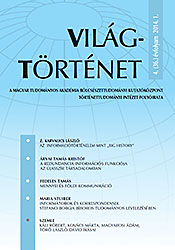A redundancia információs funkciója az újasszír társadalomban
The informative function of redundancy in the Neo-Assyrian society
Author(s): Tamás Kristóf ÁrvaiSubject(s): History
Published by: Magyar Tudományos Akadémia Bölcsészettudományi Kutatóközpont Történettudományi Intézet
Summary/Abstract: The fundamental rule of the transmission of information is redundancy. The sender endeavours to transmit the information on as many communication channels as possible, assuring in this way the arrival of his message. This rule is especially stressed in oral societies. Although the information we have now about Mesopotamian cultures is coming from written sources, back then these sources — because of the complicated cuneiform writing system– were accessible just for a very restricted social class. The communication in Assyria was based on redundancy just in the same way as in oral societies. Written in this mentality, the Assyrian royal inscriptions are also pervaded with redundancy. This recognition helps to defi ne the standpoint of the Assyrian scribes: how they selected certain patterns and omitted others, how they structured the patterns in a predetermined system, and how they repeated these sequences of patterns.
Journal: Világtörténet
- Issue Year: 2014
- Issue No: 1
- Page Range: 27-51
- Page Count: 25
- Language: Hungarian

